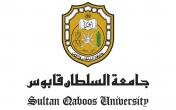
Progress Report: July - September 2014
Progress Report: July - September 2014
Progress Report
During this quarter, Caltech has performed the following tasks:
- Dr. Essam Heggy from the California Institute of Technology (Caltech) visited the Institute of Agronomy and Veterinary Science Hassan II (IAV) in Morocco from 20-27 July to deliver the synthetic aperture radar (SAR) processing station and perform L-Band SAR training and data analysis. IAVS, under the supervision of Dr. Heggy and with the collaboration of Dr. Muhamed Rouchdi, performed the Iinterferometric synthetic aperture radar (inSAR) deformation analysis, the temporal SAR backscatter variation study, and the polarimetric mapping of the Al-Sharkia survey site in this project.
- Dr. Heggy visited Sultan Qaboos University (SQU) in Oman from 20-29 August for the Radar Remote Sensing training, with the collaboration of Dr. Ali Al-Maktoumi. Also during the visit, dates were to determined for the survey in Oman, which will take place 11-23 October 2014.
- Caltech organized the set-up and logistics for the Oman survey. The site selection for the fieldwork was discussed and will be formalized with the local collaborators during the first days in Muscat. The team has discussed all the most important risks and challenges of the fieldwork so that they will be prepared to respond to any setbacks.
- Caltech produced polarimetric and interferometric coherence maps from the Advamced Land Observing Satellite (ALOS) PALSAR radar images, from which they sketched possible paleo-drainage buried ~2m under the dunes. In accordance with the different types of sand in the area, they selected the optimal locations to perform ground validation, using an 800Mhz MALA GPR antenna that should reach to 2 meters deep.
- Caltech also attempted a ground deformation analysis using inSAR over the Al Kamil Wal Wafi water plant, located on the northeast edge of the Wahiba sands.
- The Caltech team tested the radar sounding equipment on Caltech’s campus to verify that the instruments were functioning properly and to mitigate any hardware problems prior to the survey. All of the antennae were tested in both monostatic and bistatic configurations. The measurement equipment has been properly calibrated so that it is ready for the survey.
- A domestic dune test was deferred until February to avoid any damage to the instruments that could compromise the survey's timing.
In the upcoming quarter:
- Caltech will perform the Radar Sounding Survey in Oman from 11-23 October 2014 with their partners from SQU and IAV. They will perform the survey under the supervision of USAID and with the participation of the Oman Ministry of Municipalities and Water Resources.
- Caltech will discuss and elaborate on the preliminary results of the Oman fieldwork.
- Caltech will take part in the Arabian Gulf University (AGU) Fall Meeting 2014 and present an abstract with preliminary results to underline the importance of the mission.
- Caltech will write an annual report that outlines the accomplishments during the first year of the project.
Research Results & Progress Reports
Progress Report: April - June 2014
Posted: 15 June 2014 | Progress Report
During this reporting quarter, the research team completed the following tasks:
Progress Report: January - March 2014
Posted: 15 March 2014 | Progress Report
During this reporting quarter, the team completed the following tasks:
Progress Report: October - December 2014
Posted: 26 January 2015 | Progress Report
During this quarter, the research team:
-
Coordinated the organizational steps for the Radar Sounding Survey in Oman, in collaboration with Dr. Ali Al-Maktoumi of Sultan Qaboos University (SQU) and Dr. Mohamed Rouchdi of the Institute of Agronomy and Veterinary Science Hassan II (IAV). Both provided strong support and scientific inputs to perform the fieldwork in the Al-Sharkia aquifer in South-East Oman during October 2014.
Radar sounding survey in Oman in October 2014.













































